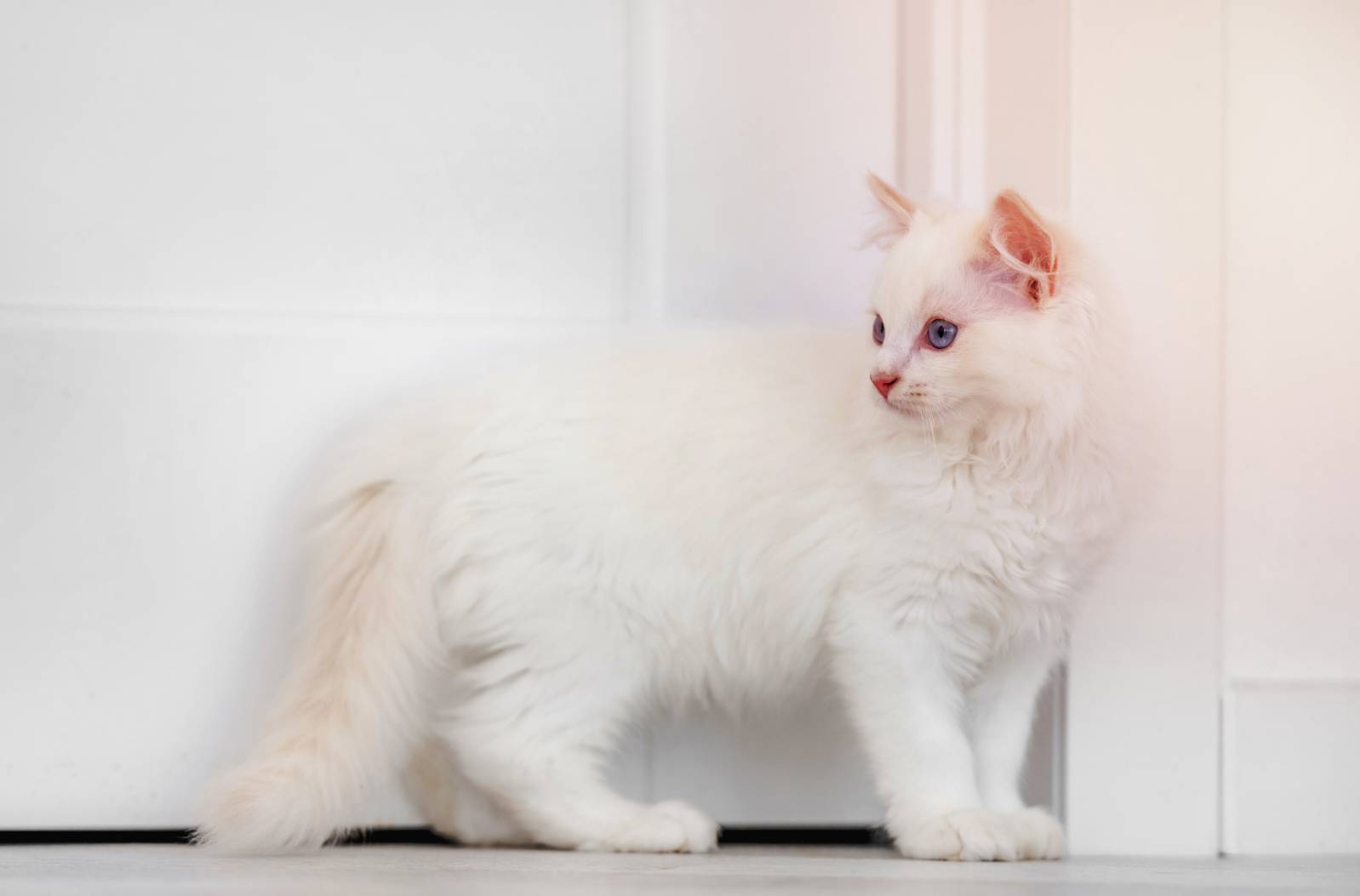New York is one of the bigger states in the United States, coming in at #27 in terms of size. New York State covers just under 54,600 square miles (about 141,000 square kilometers), and much of that area is wilderness, state parks, and national parks. That makes New York home to various large wild animals, including black bears, coyotes, white-tailed deer, and two species of wild cats.
If you’re curious about big cats, we’ll take a closer look at the two types of wild cats in New York. Read on to discover some amazing facts about these fascinating felines, how they live, what they eat, and more!
The 2 Types of Wild Cats in New York
1. Bobcat

| Habitat: | Various forests, coastal swampland, scrubland |
| Diet: | Carnivore |
| Behavior: | Solitary except when breeding |
| Size: | 1.5 feet long, 13–35 pounds |
| Scientific name: | Lynx Rufus |
| Conservation: | Least concern (LC) |
Bobcats are surprisingly hard to spot in the wild as they are nocturnal, which means they are awake at night and sleep during the day. Even when Bobcats are active during daylight hours, they’re quite elusive, so spotting one is nearly impossible unless you have a lot of time to spend waiting and watching. Bobcats got their name due to their unique tail, which looks as if it’s been “bobbed” or cut.
They’re only about twice as big as an average house cat. Their ears are slightly tufted, and they have relatively long legs for a feline. Their coloring is attractive, with brownish red on top and off-white underneath. Amazingly, a Bobcat can kill prey that is twice as big, although they mostly eat smaller animals. They kill their prey by pouncing on them from up to 10 feet away!
2. Canada Lynx

| Habitat: | Boreal forests with moist winters |
| Diet: | Carnivore |
| Behavior: | Solitary except when breeding |
| Size: | 2 feet long, 18–60 pounds |
| Scientific name: | Lynx canadensis |
| Conservation: | Least concern (LC) |
Since New York State is on the border of Canada, it’s not surprising that the Canada Lynx also makes its home there. The Canada lynx and bobcat are very similar, but they have several features that set them apart. For example, the Canada Lynx has a smaller tuft of fur on its ears.
They also have longer legs and larger paws than the Bobcat, and adult male Canada Lynx can be twice as big as adult male Bobcats. What’s genuinely interesting is that over 70% of the Canada Lynx’s diet consists of one animal, the Snowshoe Hare. They eat other animals when the opportunity arises and, like Bobcats, can take down prey much larger than they are. Still, they love Snowshoe Hares and hunt for them more than any other animal.
The Canada Lynx is known to bury its prey in the snow for safekeeping, which is a trait that sets them apart from other big cats. One last interesting fact about the Canada Lynx is that they make sounds similar to house cats, including purring, hissing, growling, and, yes, meowing.
Which Wild Cats Have Lived in New York State?
While only two types of wild cats live in New York, there used to be one more. Mountain Lions, also known as Cougars, Pumas, and Panthers, lived all over the Northeast, especially in New York. Unfortunately, the magnificent felines were hunted to extinction in the late 1800s and early 1900s, disappearing from New York forever around 1930. You will, however, occasionally hear about a Mountain Lion sighting in New York State.
Interestingly, there’s been quite a controversy about mountain lions in New York over the last two decades. Some say the government released a few in hopes of bringing them back! Still, they are considered extinct in the state. The Mountain Lion isn’t completely extinct but has only been eliminated from New York State. This type of local extinction is referred to as extirpation.
Are There Wild Cats in New York City?
When you think of “wild” cats, one vision that might pop into your head is that of a house cat that’s “gone wild.” In New York City, while you won’t find any big cats, you will find tens of thousands of wild (feral) cats. A feral cat doesn’t rely on humans to survive and, in most cases, is not socialized with humans.
They won’t come to you and generally avoid humans in most situations (although they won’t turn down a free handout of food). Right now, in New York City, there are believed to be 500+ feral cat colonies scattered around the five boroughs.

What Is the Largest Cat in the Americas?
If you’re wondering what the largest wild cat in the Americas happens to be, it’s the Jaguar. This majestic cat is third in line as the biggest cat in the world, behind the Tiger and Lion. Jaguars can grow to be almost 6 feet long and have a tail that extends nearly 3 feet further.
These massive cats can also weigh upwards of 270 pounds. What’s truly unique about Jaguars is that they can swim quite well. That’s because they’ve adapted over the millennia to live in environments where water is a constant. They have no problem, for example, swimming across large rivers.
Like Lions, Jaguars roar but mostly do so when attempting to attract a mate. They are opportunistic hunters, meaning they eat almost any animal they encounter (at least when hungry). Jaguars are also diurnal, which means they hunt during the day.
They have the most powerful bite of any cat species. It’s so strong that Jaguars can pierce the skin of crocodiles and crunch turtle shells like most of us crunch potato chips.
What Wild Cats Live in North America?
Although there are only two species of wild cat living in New York State, there are six that live in North America. Most people don’t realize that wild cats are everywhere, not just in the depths of the forest. Jaguars are found all over Arizona, for example, and you’ll see Cougars if you look closely in Las Vegas.
- Bobcats. (Lynx Rufus)
- Canadian Lynx (Lynx canadensis)
- Jaguar (Panthera onca)
- Jaguarundi (Herpailurus yagouaroundi)
- Mountain Lion (Puma concolor)
- Ocelot (Leopardus pardalis)
What Is the Apex Predator in New York State?
Residing primarily in thick forests, Black Bears are only found in North America, but their range is vast. It extends from Canada down to Mexico.
Although Black Bears are the smallest of the three species in the United States, they are still massive. Adult males can weigh upwards of 500 pounds and be up to 6 feet tall! Conservationists believe the total Black Bear population consists of about 800,000 black bears. New York State has between 6,000 and 7,000 Black Bears, a relatively small population.
Final Thoughts
As we saw today, there are two types of wild cats in New York: the Bobcat and the Canada Lynx. These captivating big cats have large enough populations to be considered the least concern (LC) to conservationists. One likely reason is that bobcats and Canada Lynxes are very solitary animals and live deep in the forests of New York State, where humans don’t have a significant presence. Both species are similar in many ways, although the Canada Lynx is larger than the Bobcat.
While you may never get the chance to see them in the wild, rest assured that they are there doing their best to survive in an ever-changing world.
- Related Read: Ragdoll Kittens For Sale in New York: Breeders List
Featured Image Credit: Ewa Studio, Shutterstock












